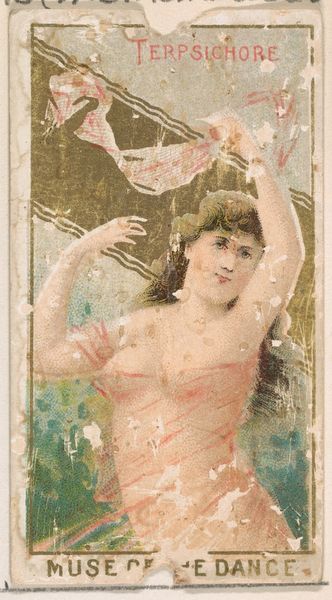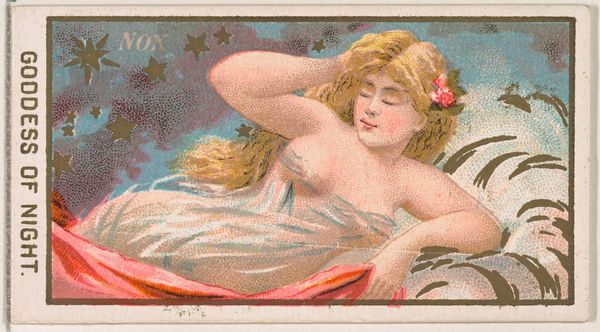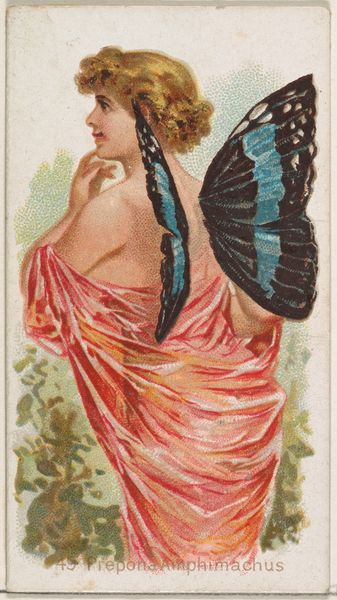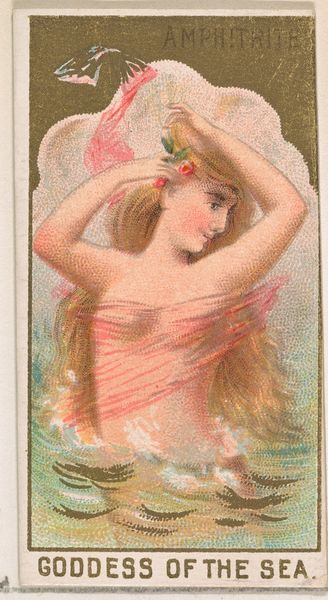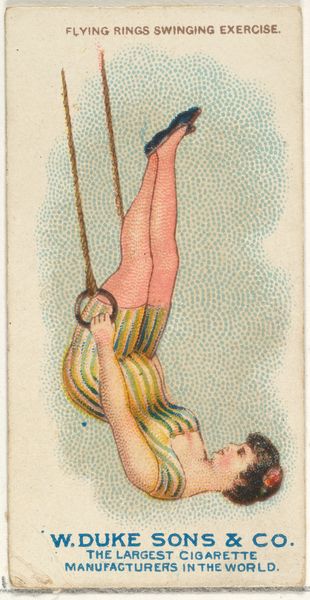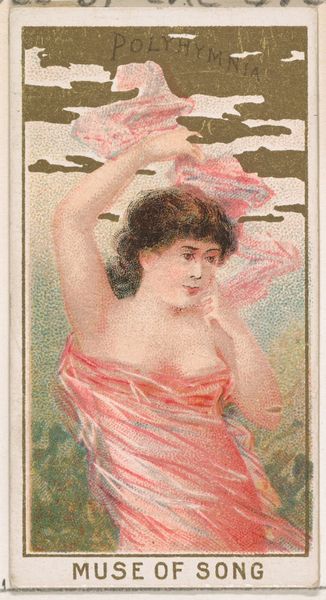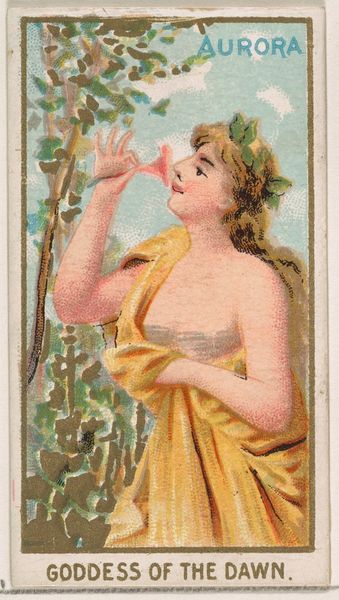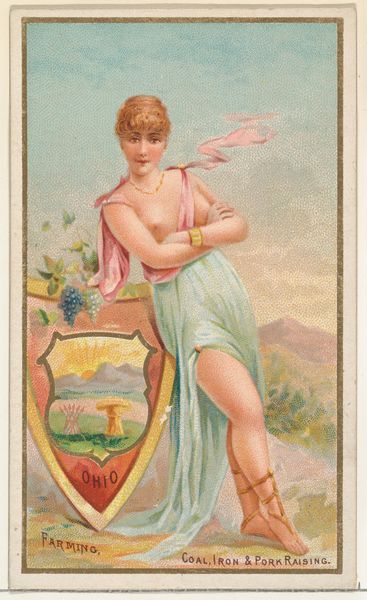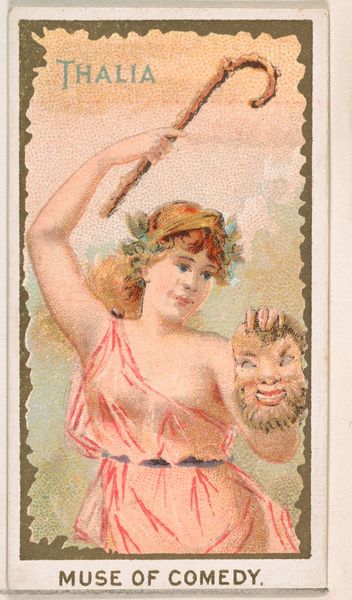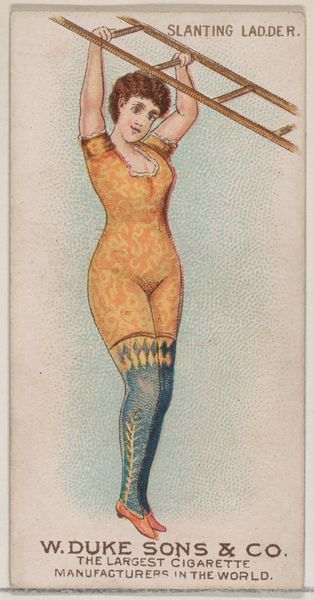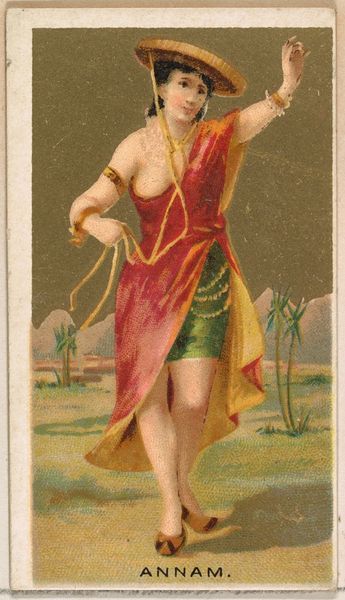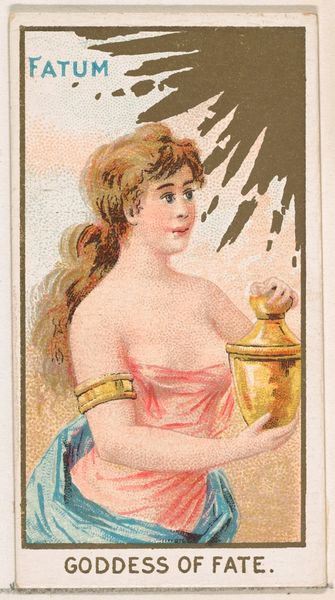
Diana, Goddess of the Hunt, from the Goddesses of the Greeks and Romans series (N188) issued by Wm. S. Kimball & Co. 1889
0:00
0:00
drawing, print
#
portrait
#
drawing
#
neoclassicism
# print
#
symbolism
#
history-painting
#
portrait art
Dimensions: Sheet: 1 1/2 × 2 3/4 in. (3.8 × 7 cm)
Copyright: Public Domain
Editor: So, this is "Diana, Goddess of the Hunt" from the Goddesses of the Greeks and Romans series, made around 1889 by William S. Kimball & Co. It's a print, and there’s something ethereal, yet almost melancholic about it. I am really intrigued by the downward gaze and her tense pose, even though she's a goddess. What layers do you see in this piece? Curator: Indeed. Diana, or Artemis as the Greeks knew her, often embodied contradictions. While nominally the powerful, virginal goddess of the hunt and the moon, she also held strong associations with liminal spaces, both physical and psychological. Her symbol, the crescent moon, isn't just celestial, but suggestive of change, cycles, and the hidden. Editor: Cycles? You mean like phases of the moon? Curator: Exactly! And, by extension, womanhood, transformation. Note how this image isn’t about a victorious hunt, but a poised moment before action. The arrow points upwards, charged with intent, yet her gaze drifts downward. She embodies the tension between ambition and reflection. The late 19th century experienced an increase in spiritualist belief, suggesting that it isn't enough to accept reality and look toward tangible artifacts to derive meaning. Is she a woman warrior? A chaste figure? Or something else? This invites a lot of room for interpretation! Editor: I never considered the dualities within her image. So the crescent on her head underscores that connection? I initially took it at face value, you know, a signifier of the goddess. Curator: It's easy to read it as purely symbolic, but always consider what symbols meant in their time. Diana was experiencing renewed fascination during that era. Symbols shift meaning through generations, constantly shaped and reshaped by our cultural needs and subconscious desires. I think her ambivalence captures that late-Victorian sense of self perfectly! Editor: That is really amazing - thank you for pointing out all these insights about both Diana and the Victorian psyche. I now see the work as less melancholic, more about transformation.
Comments
No comments
Be the first to comment and join the conversation on the ultimate creative platform.
